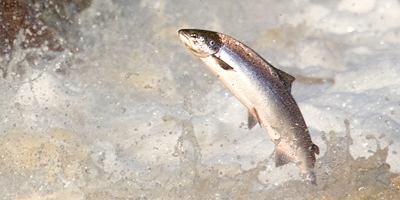Which Animals Are Used
Fish
 With fish experimentation greatly increasing over the past decade, fish are one of the most commonly used animals in laboratories, believed to be second only to mice. But it is not possible to determine the exact number of fish used in U.S. labs because they are not covered by the Animal Welfare Act, so their numbers are not required to be reported to the U.S. Department of Agriculture. However, the European Union, which does regulate the use of fish in labs, shows them as a fast growing segment of animals use, due in part to an increase in chemical testing for concerns about water pollution. For example, the “Whole Effluent Test” is estimated to use approximately 5 million fish a year worldwide. The “Fish Acute Toxicity” test calls for three species (one saltwater fish, one cold freshwater, and one warm freshwater species), requiring as many as 260 fish per chemical.
With fish experimentation greatly increasing over the past decade, fish are one of the most commonly used animals in laboratories, believed to be second only to mice. But it is not possible to determine the exact number of fish used in U.S. labs because they are not covered by the Animal Welfare Act, so their numbers are not required to be reported to the U.S. Department of Agriculture. However, the European Union, which does regulate the use of fish in labs, shows them as a fast growing segment of animals use, due in part to an increase in chemical testing for concerns about water pollution. For example, the “Whole Effluent Test” is estimated to use approximately 5 million fish a year worldwide. The “Fish Acute Toxicity” test calls for three species (one saltwater fish, one cold freshwater, and one warm freshwater species), requiring as many as 260 fish per chemical.
In biomedical research, zebrafish, including genetically modified fish, are increasingly used because they are small and inexpensive, have short lifespans, and their embryos are transparent, making them ‘convenient’ test subjects for making observations.
How Fish Are Used
Because zebrafish embryos are transparent, develop outside of the mother, and are fast growing, they are frequently used to study human development and physiology. They are also uniquely capable repairing heart muscle and are often used as models in cardiac regeneration research. Fish are also used to study human genetic disorders and carcinogenicity, among other human health problems. As mentioned above, many fish are used in environmental toxicity testing, including “LC50” (Lethal Concentration) testing in which 50% of the fish die.
Although some in the science community consider fish ‘lower’ animals, they do suffer when used in research and testing. A 2009 National Research Council report on the pain and distress experiences of animals, including fish, used in experiments stated that “all vertebrates should be considered capable of experiencing the aversive state of pain.”
